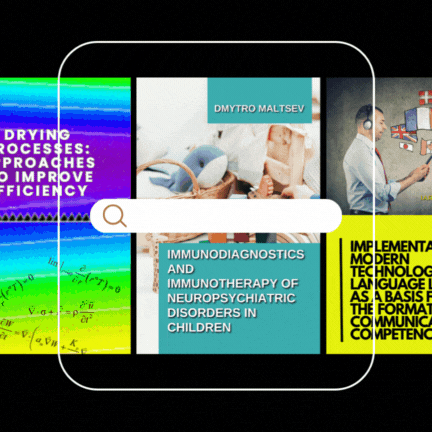Development of a model for optimal configuration components selection for architecture of critical IT infrastructure at its designing
DOI:
https://doi.org/10.15587/2312-8372.2017.118388Keywords:
critical IT infrastructure, Markov decision-making process, model of configuration choiceAbstract
The object of research is a critical IT infrastructure. One of the most problematic places in the study of critical IT infrastructures is the complete lack of approaches, methodology and tools for designing, modeling and researching critical IT infrastructures that could be used in the form in which they are offered.
Based on the Markov decision-making process, a model is proposed that will allow to evaluate the implementation options for components, critical IT infrastructure systems by various criteria. The peculiarity of this model is the use of an extended set of criteria, which makes it possible to evaluate the implementation options for components and systems of critical IT infrastructure from different points of view.
In the course of the research, MatLab software package is used, which allowed to check the proposed model for operability.
The resulting model is fairly compact and fully reflects the necessary logic for evaluating the implementation options for components and critical IT infrastructure systems. It is shown that this is achieved due to the flexibility of the proposed mathematical apparatus, namely the possibility of using different evaluation criteria.
In the future, the proposed model and assessment models for all major systems and critical IT infrastructure components will provide a convenient tool for a wide range of researchers whose work is related to all aspects of researching critical IT infrastructures.
As a result of modeling, among the 84 possible configurations of the data processing center, the best overall winning (configuration 4) is chosen.
References
- Ghemawat, P. (2007). Managing Differences: The Central Challenge of Global Strategy. Harvard Business Review, 85 (3), 58–68.
- Simonsen, J. (2007). Involving top management in IT projects. Communications of the ACM, 50 (8), 52–58. doi:10.1145/1278201.127820
- Wilkin, C. L., Chenhall, R. H. (2010). A Review of IT Governance: A Taxonomy to Inform Accounting Information Systems. Journal of Information Systems, 24 (2), 107–146. doi:10.2308/jis.2010.24.2.107
- Grover, V., Henry, R. M., Thatcher, J. B. (2007). Fix IT-business relationships through better decision rights. Communications of the ACM, 50 (12), 80–86. doi:10.1145/1323688.1323699
- Shpilberg, D., Berez, S., Puryear, R., Shah, S. (2007). Avoiding the Alignment Trp in Information Technology. MIT Sloan Management Review, 49 (1), 51–58.
- Neirotti, P., Paolucci, E. (2007). Assessing the strategic value of Information Technology: An analysis on the insurance sector. Information & Management, 44 (6), 568–582. doi:10.1016/j.im.2007.05.005
- Sen, A., Sinha, A. P. (2011). IT alignment strategies for customer relationship management. Decision Support Systems, 51 (3), 609–619. doi:10.1016/j.dss.2010.12.014
- Casalicchio, E., Galli, E., Tucci, S. (2007). Federated Agent-based Modeling and Simulation Approach to Study Interdependencies in IT Critical Infrastructures. Proceedings of the IEEE International Symposium on Distributed Simulation and Real-Time Applications (DS-RT‘07). Chania, Crete, Greek. doi:10.1109/ds-rt.2007.11
- Pederson, P., Dudenhoeffer, D., Hartley, S., Permann, M. (2006). Critical Infrastructure Interdependency Modeling: A Survey of U.S. and International Research. Technical Report No. INL/EXT-06-11464. Idaho: Idaho National Laboratory, 116. doi:10.2172/911792
- Panzieri, S., Setola, R., Ulivi, G. (2005). An approach to model complex interdependent infrastructures. IFAC Proceedings Volumes, 38 (1), 404–409. doi:10.3182/20050703-6-cz-1902.00068
- Dorogyy, Y. (2017). Development of the approach for designing, modelling and research of critical IT infrastructure. Technology Audit and Production Reserves, 5 (2 (37)), 34–41. doi:10.15587/2312-8372.2017.112495
- BS ISO/IEC 17789:2014. Information technology. Cloud computing. Reference architecture. (2014). The British Standards Institution. doi:10.3403/30268907
- NIST SP 500-291. NIST Cloud Computing Standards Roadmap. (2013). National Institute of Standards and Technology. doi:10.6028/nist.sp.500-291r2
- Marcus, B. (2015, October 5). Interfacing NIST IoT, Big Data, and Cloud Models. Available at: https://bigdatawg.nist.gov/_uploadfiles/M0450_v1_3857254727.pdf
- BS ISO/IEC 27017:2015. Information technology. Security techniques. Code of practice for information security controls based on ISO/IEC 27002 for cloud services. (2015). The British Standards Institution. doi:10.3403/30259620
- BS ISO/IEC 27018:2014. Information technology. Security techniques. Code of practice for protection of personally identifiable information (PII) in public clouds acting as PII processors. (2014). The British Standards Institution. doi:10.3403/30266768
- BS ISO/IEC 27036-4:2016. Information technology. Security techniques. Information security for supplier relationships. Guidelines for security of cloud services. (2016). The British Standards Institution. doi:10.3403/30275201
- BS EN ISO/IEC 27040:2016. Information technology. Security techniques. Storage security. (2015). The British Standards Institution, doi:10.3403/30249804
- IEEE P 2302 ™/D 0.2. Draft Standard for Intercloud Interoperability and Federation (SIIF). (2012, January). The Institute of Electrical and Electronics Engineers, Inc. Available at: https://www.oasis-open.org/committees/download.php/46205/p2302-12-0002-00-DRFT-intercloud-p2302-draft-0-2.pdf
- ANSI/TIA-942-2005. Telecommunications Infrastructure Standard for Data Centers. (2005). Arlington: Electronic Components Industry Association (ECIA). Available at: http://www.ieee802.org/3/hssg/public/nov06/diminico_01_1106.pdf
- BS EN 50173-5:2007+A2:2012. Information technology. Generic cabling systems. Data centres. (2007). The British Standards Institution. doi:10.3403/30141480
- ISO/IEC 24764:2010. Information technology – Generic cabling systems for data centres. (2010). International Organization for Standardization. Available at: https://www.iso.org/standard/43520.html
- Shelimanova, Zh. V., Yanovska, O. V., Furmanov, A. A. (2015). Taxonomic scheme of cloud computing. Radioelektronni i kompiuterni systemy, 74 (4), 51–55.
- Data Center Networking – Connectivity and Topology Design Guide. Available at: https://www.cdigroup.co.uk/wp-content/pdf-documents/data-centers/Enterasys-Data-Center-Design-Guide.pdf
- SLA for App Service. (2016, July). Microsoft Azure. Available at: https://azure.microsoft.com/en-us/support/legal/sla/app-service/v1_4/
- Murray, P., Melander, B., Fusenig, V., Meulle, M., Vaquero, L. (2011). Cloud Networking Architecture Description. Scalable and Adaptable Internet Solutions, 14–69.
Downloads
Published
How to Cite
Issue
Section
License
Copyright (c) 2017 Yaroslaw Y Dorogyy

This work is licensed under a Creative Commons Attribution 4.0 International License.
The consolidation and conditions for the transfer of copyright (identification of authorship) is carried out in the License Agreement. In particular, the authors reserve the right to the authorship of their manuscript and transfer the first publication of this work to the journal under the terms of the Creative Commons CC BY license. At the same time, they have the right to conclude on their own additional agreements concerning the non-exclusive distribution of the work in the form in which it was published by this journal, but provided that the link to the first publication of the article in this journal is preserved.







